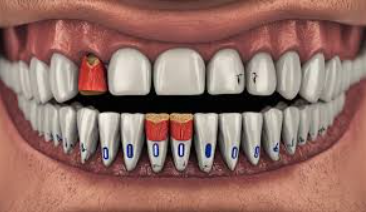Sinus Lift Dental Procedure Codes
A sinus lift (or sinus augmentation) is a specialized dental surgical procedure designed to increase bone volume in the upper jaw, particularly in the posterior maxilla where bone loss often occurs due to missing teeth or periodontal disease. This procedure is crucial for patients who need dental implants but lack sufficient bone height due to sinus pneumatization.
Understanding the correct dental procedure codes (CDT codes) for sinus lifts is essential for accurate billing, insurance claims, and reimbursement. This comprehensive guide will explore the different sinus lift techniques, their indications, the latest CDT codes, insurance considerations, and best practices for successful outcomes.

2. What Is a Sinus Lift?
A sinus lift is a bone grafting procedure that elevates the maxillary sinus membrane to create space for new bone growth. This is necessary when the natural bone height in the posterior maxilla is insufficient to support dental implants.
Why Is a Sinus Lift Needed?
- Bone resorption after tooth loss
- Sinus expansion (pneumatization) reducing available bone
- Trauma or congenital defects affecting maxillary bone
3. Indications for a Sinus Lift Procedure
A sinus lift is recommended when:
✔ Bone height is less than 5mm (minimum needed for implants)
✔ Patients need molar implants but lack bone support
✔ Sinus proximity risks implant penetration into the sinus
4. Types of Sinus Lift Techniques
A. Lateral Window Technique (Most Common)
- Involves creating a small lateral window in the maxillary bone.
- The sinus membrane is lifted, and bone graft material is placed.
- Best for: Severe bone deficiency cases.
B. Osteotome-Mediated Sinus Lift (Crestal Approach)
- Less invasive, uses osteotomes to gently lift the sinus floor.
- Best for: Moderate bone loss (6-8mm remaining bone).
C. Piezoelectric Sinus Lift
- Uses ultrasonic vibrations for precise bone cutting.
- Benefits: Reduced risk of membrane perforation.
D. Balloon Sinus Lift
- A balloon device elevates the sinus membrane before grafting.
- Advantage: Minimally invasive.
5. Step-by-Step Sinus Lift Procedure
- Anesthesia: Local or IV sedation.
- Incision: Gum tissue is opened to expose the bone.
- Bone Window Creation (for lateral approach).
- Membrane Elevation: Sinus lining is carefully lifted.
- Bone Graft Placement: Graft material fills the space.
- Closure: Sutures secure the site.
- Healing: 4-9 months before implant placement.
6. Sinus Lift Dental Procedure Codes (CDT Codes)
| CDT Code | Description | Average Cost (US) |
|---|---|---|
| D6101 | Sinus augmentation via lateral window approach | 1,500−1,500−3,500 |
| D6102 | Sinus augmentation via vertical approach | 1,200−1,200−3,000 |
| D6103 | Sinus augmentation via osteotome technique | 1,000−1,000−2,500 |
| D7953 | Bone graft for sinus lift (per socket) | 300−300−800 |
7. Insurance Coverage and Reimbursement
- Medical vs. Dental Insurance: Some medical plans cover sinus lifts if deemed medically necessary.
- Pre-Authorization Required: Many insurers require documentation.
- Out-of-Pocket Costs: Typically 1,500−1,500−4,000.
8. Common Complications and How to Avoid Them
- Sinus Membrane Perforation (5-30% risk) → Use piezoelectric tools.
- Infection → Antibiotics and sterile technique.
- Graft Failure → Proper post-op care.
9. Post-Operative Care and Recovery
- Avoid: Blowing nose, sneezing forcefully, straws.
- Medications: Antibiotics, pain relievers, nasal decongestants.
- Healing Time: 4-9 months before implant placement.
10. FAQs About Sinus Lift Procedures
Q1: How painful is a sinus lift?
Most patients report mild discomfort, manageable with pain meds.
Q2: Can I get an implant immediately after a sinus lift?
No, waiting 4-9 months ensures graft integration.
Q3: What happens if the sinus membrane tears?
A small tear can often be repaired; large tears may require rescheduling.
11. Conclusion
A sinus lift is a vital procedure for patients needing implants in the upper jaw with insufficient bone. Understanding the correct CDT codes (D6101, D6102, D6103, D7953) ensures proper billing and insurance processing. With advancements like piezoelectric and balloon techniques, sinus lifts are safer and more predictable than ever.
12. Additional Resources
- American Academy of Implant Dentistry (AAID)
- American Dental Association (ADA) CDT Codes
- Journal of Oral Implantology – Sinus Lift Studies


